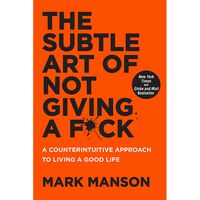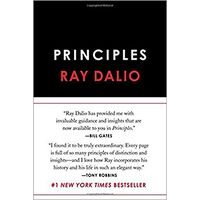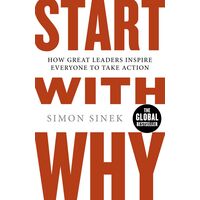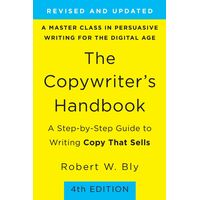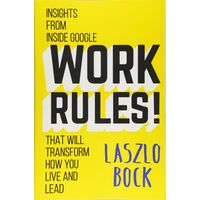Humor, Seriously: Why Humor Is a Secret Weapon in Business and Life (And how anyone can harness it. Even you.)
978059323842

Từ nhà sách đầu tiên năm 1982, Nhà Sách Phương Nam đã trở thành hệ thống nhà sách uy t...
Humor, Seriously: Why Humor Is a Secret Weapon in Business and Life (And how anyone can harness it. Even you.)
Chapter 1 The Humor Cliff“Humor is mankind’s greatest blessing.”—Mark TwainIt’s the first day of spring quarter at Stanford’s Graduate School of Business. Fifty students excitedly file into a lecture hall, a few still wondering whether the course they’ve registered for is an elaborate joke played by the administration. “Humor: Serious Business” is about to begin.Whiteboards line the walls; all the chairs and tables have wheels, for easy rearranging. It’s a setting that’s ideal for workshopping and terrible for napping. Jennifer, in her self-appointed role as DJ, has David Bowie’s “Rebel Rebel” blasting. Naomi has a clip from SNL cued up to kick off the lecture.And yet trepidation hangs heavy in the air.Before class begins each semester, we have our students complete a “Humor Audit,” a self-reflection exercise / terrifyingly personal quiz about how they use humor in their lives. It includes questions like “Who or what makes you laugh the most in your life?” and “Who do you feel the funniest around?” and “Please submit complete documentation of your income, expenses, and assets for the previous fiscal year.”So it’s understandable that the students feel spooked: A sense of humor is like a muscle—it atrophies without regular use. Unfortunately, we find that in most students and executives we start working with, atrophy abounds. Just look at these responses to the question “When was the last time you really laughed?”:“I honestly can’t remember. Is that terrible?”“I’ve been thinking and am drawing a blank! I know I laugh. Or at least I thought I did, which now I’m questioning . . .”“On Tuesday, I did not laugh once. Not once. Who knew a class about humor could be so depressing?”The good and bad news about these responses is that our students are not alone. And it’s not Tuesday.The Humor CliffThe collective loss of our sense of humor is a serious problem afflicting people and organizations globally. We’re all going over the humor cliff together, tumbling down into the abyss of solemnity below.At the bottom of that abyss we’re joined by the majority of 1.4 million survey respondents in 166 countries who revealed in this Gallup poll that the frequency with which we laugh or smile each day starts to plummet around age twenty-three.To some extent, this pattern makes sense. As kids, we laugh all the time. The average four-year-old laughs as many as three hundred times per day. (The average forty-year-old, by comparison, laughs three hundred times every two and a half months.) Then we grow up, enter the workforce, and suddenly become “serious and important people,” trading laughter for ties and pantsuits.Before long, we lose levity entirely in a sea of bottom lines, slide decks, and mind-numbing conference calls. Our sense of play is repressed by a dizzyingly complex and dynamic professional environment, full of social land mines that are difficult to gauge and feel safer to avoid. As a result, most of us choose to keep our interactions sterile, measured, and professional; we go to work each day and leave our sense of humor—and so much more of ourselves—at the door.This response signals a fundamental misunderstanding about how to work—how to solve important problems, how to conduct ourselves, and how to be successful.We don’t need more “professionalism” in our workplaces. Instead, we need more of ourselves, and more human connection—especially as in-person meetings are replaced by video chats and more relationships are sustained entirely by email. Often, all it takes is a hint of levity to shift a moment, or a relationship, from transactional and robotic to relational and authentic.So what’s holding us back?Our research reveals four common misperceptions—or, as we like to call them:The Four Deadly Humor MythsAfter we surveyed more than seven hundred people across a wide range of industries and levels about what holds them back from using humor at work, four themes emerged, each rooted in a myth that needs debunking. It’s MythBusters, Business Edition.The Serious Business MythA large portion of our respondents reported believing that humor simply has no place amid serious work.Early in our careers, this myth often stems from insecurity about our lack of experience. (This is before we’re experienced enough to know nobody really knows anything.) We worry about harming our credibility and not being taken seriously.Yet according to surveys of hundreds of executive leaders conducted by Robert Half International and Hodge-Cronin & Associates, 98 percent reported preferring employees with a sense of humor, while 84 percent believed employees with a sense of humor do better work. And humor affects not just how our leaders perceive us, but also how our peers do: Showing our sense of humor can make our peers more likely to attribute higher status to us and to vote us into leadership roles.As we rise through the ranks in our careers, this misconception evolves. With greater status comes greater scrutiny; when we find ourselves on progressively bigger stages, we feel pressure to signal even more professionalism and “seriousness” to shareholders, customers, and colleagues. What’s more, leaders report that the status differential makes it harder to show up as their authentic selves while also fulfilling the responsibilities of their public role.But now more than ever, they need to do both.Today’s leaders are facing a crisis of trust; nearly half of employees cite their lack of trust in leadership as the single biggest issue impacting their work performance.What’s more, when employees are asked what characteristics inspire trust in a leader, the responses that rise to the top—like “knowing the obstacles the leader overcame” and “speaks like a regular person”—tell a consistent story: Today’s employees yearn for more authentic, human leaders. Aspirational, yes, but also flawed. Humor is a powerful leadership strategy to humanize oneself to employees, break down barriers, and balance authority with approachability. (So powerful in fact that we wrote an entire chapter about it—damn.) As one example, leaders who use self-deprecating humor are rated higher on measures of both trustworthiness and leadership ability by their employees. While the bosses in question would probably downplay those gains with self-deprecating humor, they’re very real.And beyond the signals we send to our employees, a culture that balances serious work with levity and play can actually improve team performance. In a study involving more than fifty teams, researchers analyzed prerecorded team meetings as well as supervisors’ ratings of team performance, both immediately and again two years later. The presence of humor in team interactions predicted more functional communication and higher team performance both in the moment and over time. Playful cultures allow teams to thrive, even (and especially) when the stakes are high and the times are hard.Of course, we shouldn’t go for funny all the time—that would be exhausting (and counterproductive). But we’ve swung so far in the other direction that our businesses thirst for it. The secret to success for many of the brilliant executives featured in this book is their ability to strike a delicate balance between gravity and levity; much like hot fudge and ice cream, each enhances the other. And both make something (your business prospects and glycemic index, respectively) rise precipitously.And if that adorable balloon heroically balancing an anchor isn’t convincing enough, then let’s pass the mic to President Eisenhower, who once said “A sense of humor is part of the art of leadership, of getting along with people, of getting things done.”If Dwight David Eisenhower, the second-least naturally funny president after Franklin Pierce, thought humor was necessary to win wars, build highways, and warn against the military-industrial complex, then you better learn to use it, too.
Loại sản phẩm
Bìa mềm
Kích thước
23.1x2.4x16 cm
Số trang
272
Tác giả
- Naomi Bagdonas
Nhà Xuất Bản
- Random House LCC US
ISBN 13
9780593238424
Sản phẩm này chưa nhận được đánh giá nào. Bạn hãy là người đầu tiên đánh giá nhé!
Please sign in so that we can notify you about a reply






